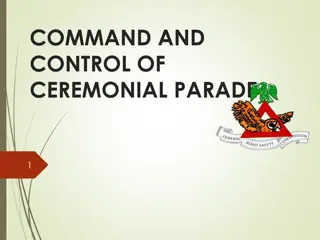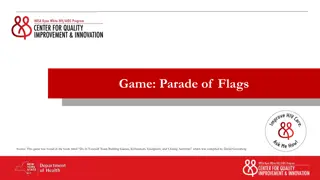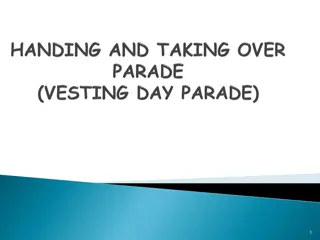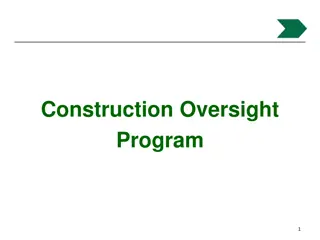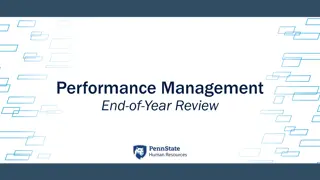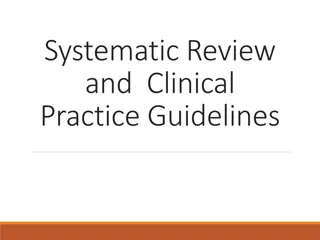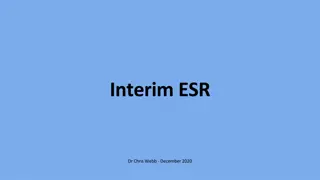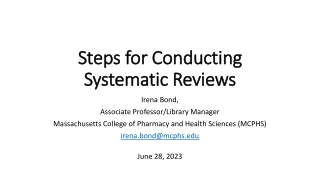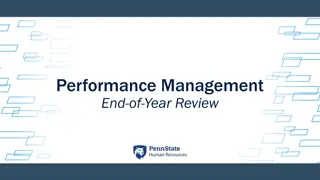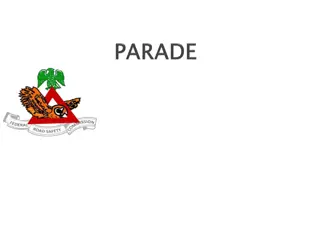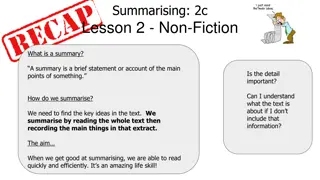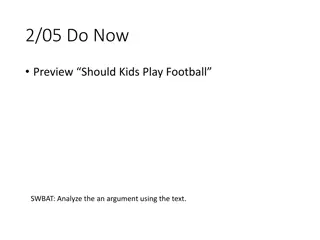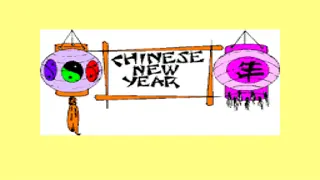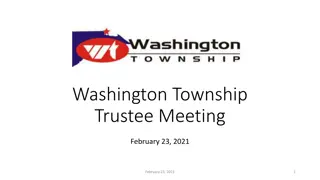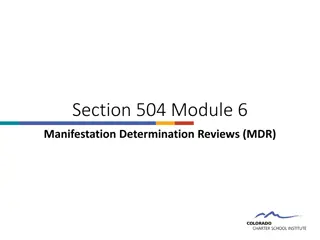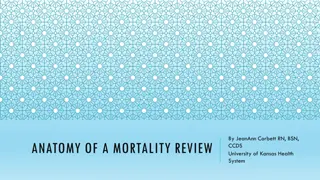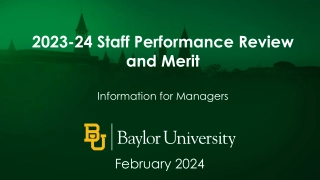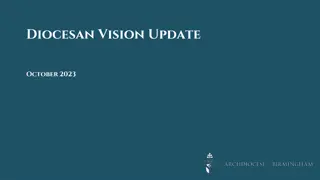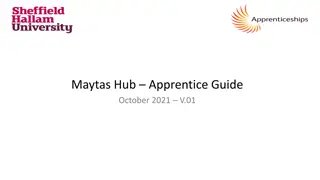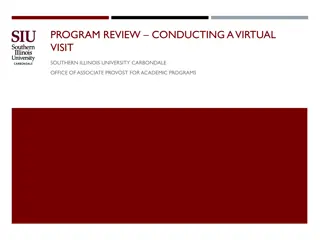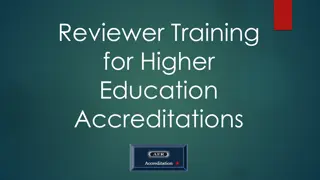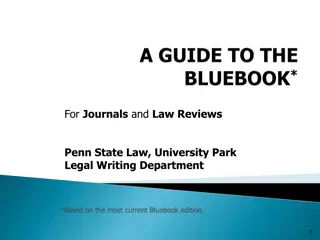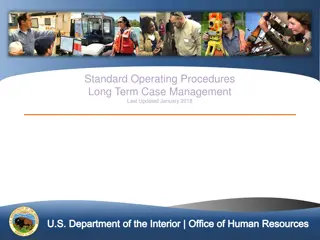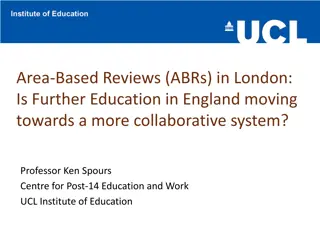Understanding Parade Reviews in a Regimental Setting
This presentation delves into the intricacies of Parade Review procedures in a regimental context, emphasizing the significance of discipline, order, and protocol. It highlights the types of parades, such as Routine and Ceremonial parades, detailing their purposes, sequences, and the role of a Reviewing Officer. By discussing the essence of Parade Reviews, it underscores the importance of familiarity with these protocols for all participants involved.
Download Presentation

Please find below an Image/Link to download the presentation.
The content on the website is provided AS IS for your information and personal use only. It may not be sold, licensed, or shared on other websites without obtaining consent from the author. Download presentation by click this link. If you encounter any issues during the download, it is possible that the publisher has removed the file from their server.
E N D
Presentation Transcript
They (soldiers) must learn to keep their ranks, obey words of command and signals by drum and trumpet and to observe good order whether they halt, advance, retreat, are upon a march or engage with an energy NICHOLO MACHIVELLI ARTE DELLS GUERRA, 1520. Parades are aimed at showcasing the level of discipline, expertise and strength of the nation, command or unit. In simple words, parades can be described as the uniform and orderly display of men and materials. Parade is divided into two: Routine and Ceremonial parades.
AIM The aim of this presentation is to discuss the step by step procedure of Parade Review in a regimental setting.
This paper is basically to highlight the concepts and understanding of Parade review sequences so as to remind participants of the need to familiarize themselves with the procedures. Also to identify the characteristics of a review Officer.
TYPES OF PARADE Routine Parade: These are parades that are carried out almost on daily basis. This type of parade is usually called to either pass information or for inspection purposes. The following are examples of routine parades. REVEILLE: This is the first bugle call sounded in the early hours of the morning at exactly 0600 hours. It is meant to signify the commencement of the day s activities during this period; the National flag will be hoisted. RETREAT: Retreat is sounded at sunset to signify the end of the day s activities i.e. lowering the national flag and to notify sentries to start challenging intruders until sunrise.
TYPES OF PARADE Conts. TATTOO: Tattoo is an outdoor show with the use of bugle at night to check men on daily basis after the day s work. This is to ensure that all personnel are back and complete in the barracks. QUARTER GUARD: Quarter Guard are mounted to showcase the discipline, alertness and readiness of the command. CHANGE OF QUARTER-GUARDS: Change of Quarter Guard parade is mounted weekly in a command to signify the end of duty for a Quarter Guard. .RSM PARADE: RSM parade is more or less a rehearsal for the Commanding Officer parades. COMMANDING OFFICER S PARADE: Commanding officer s parade is held at RSHQ, Zones, Sectors and Unit Command levels. In FRSC it is referred to as muster parade
Ceremonial parades are parades conducted to mark important ceremonies. In ceremonial parades people are invited within and outside the commission to witness it. It is usually inspected and reviewed by a Reviewing Officer who is often selected from military, Para-military or a highly placed Civilian. In ceremonial parades, officers and Marshals are expected to dress in their number one (1) uniform, otherwise known as ceremonial uniform.
CHARACTERISTICS OF A REVIEW OFFICER 1. A Reviewing Officer is a commissioned senior Officer. 2. A highly charismatic leader. 3. Has an eloquent personality. 4. A highly disciplined officer. 5. A very neat gentle man officer. 6. A highly comported officer. 7. He is well knowledgeable in regimentation. 8. Must be an officer that is focused.
QUARTER GUARD Quarter Guard is mounted to show case the discipline, alertness and readiness of the command. They are inspected by commanding Officers on daily or weekly basis as may be convenient and also by visiting special guests to the commands. The quarter guard consists of 9 Marshals; an SRMA AS GUARD COMMANDER, a Sentry, 6 RMAIII and a Bugler. The Sentry is at the right side of the Quarter Guard, followed by the Bugler. The third man is the Quarter Guard Commander and the rest of the Guards. During the inspection, the best turned out Marshal among the RMAIIIs is selected as the stick orderly to the commander/commanding officer for the day.
SEQUENCE FOR INSPECTING QUARTER GUARD The Sentry is usually positioned at the Quarter Guard for the duty of the day. In that position the Sentry calls out to the remaining Guards by calling out Turn out the guards, guard turn up The Quarter Guard Commander in the Guard room with the remaining guards comes to attention and gives them the word of command to attention then he gives them the word of command shoulder arms and then followed with the word of command move to the right in single file right turn . After which he marches them to the Quarter guard to align with the Sentry. On the Quarter Guard, the Guard Commander gives mark time and give the Guard Halt followed by With advance left turn then ulder arms . The Guard Commander gives the command dressing! Right dress (in taking dressing all the guards look right while the Sentry looks straight). He finally calls Guards eyes front then stand at ease . And wait for the Reviewing Officer.
SEQUENCE FOR INSPECTING QUARTER GUARD conts. Quarter Guard Commander calls the Guards to attention and shoulder arm as the Reviewing Officer mounts the saluting dais. The Quarter Guard Commander will give the command General salute present arms . As the movement begins the Reviewing Officer remains still, the Reviewing Officer only salutes as the right foot of the Guards move a little to the back of the left foot. The Bugler blows the bugle for the General salute . As he completes this, the Quarter Guard Commander will give the command shoulder arms and the Guards will move the riffle to the right hand side and as the foot comes to its former position of attention, the Reviewing Officer drops his hand at the same time with the Guards. The Quarter Guard Commander moves a pace forward, halt and salutes with his riffle and the Reviewing Officer receives the salute and drop his hand to the side. The Quarter Guard Commander then introduces himself and the guards to the Reviewing Officer and thereafter invites him for inspection.
SEQUENCE FOR INSPECTING QUARTER GUARD conts. The Quarter Guard Commander moves a pace backwards to his position and commands the Guards to ulder arms . Thereafter, the Reviewing Officer will start inspecting the Guards from the right hand side of the Quarter Guard. He will inspect both front and back of the Guards and return to the saluting dais by passing between the Sentry and Bugler. After the inspection, the Guard Commander gives the command General salute present arms then the Bugler blow the Bugle. After the general salute the Guard Commander will take a pace forward, salute the Reviewing Officer with his riffle and ask for permission to dismiss the Guards into the Guard room. Once the permission is granted, he salutes again and takes a pace backward to align with the other members of the Guard. The Quarter Guard Commander gives the command Sentry stand fast, remainder Guards into the Guard room dismiss . While this is being done, the Reviewing Officer will remain in his position. With the command dismiss the Guards will turn to the right, hi-port their riffles, look to the left at the direction of the Reviewing Officer at the same time the Sentry will take a step forward and present arm as the Guard turn right, the Reviewing Officer will salute, thereafter the Guards will turn their face to the front and march off to the Guard room. After that he disembarks the saluting dais and proceeds to the parade ground.
CONCLUSION. Parade review is almost an everyday activity in any military and Para- military organizations. Its participation is for all ranks therefore the need to acquaint oneself with its procedures is needful. All regimental functions start and end with parade activity.
REFERENCE Drills (All Arms) 1974 Traditions, Customs and Ethics of the Nigerian Army. Parade and Regimentation in FRSC, Oludare Ogunjobi


